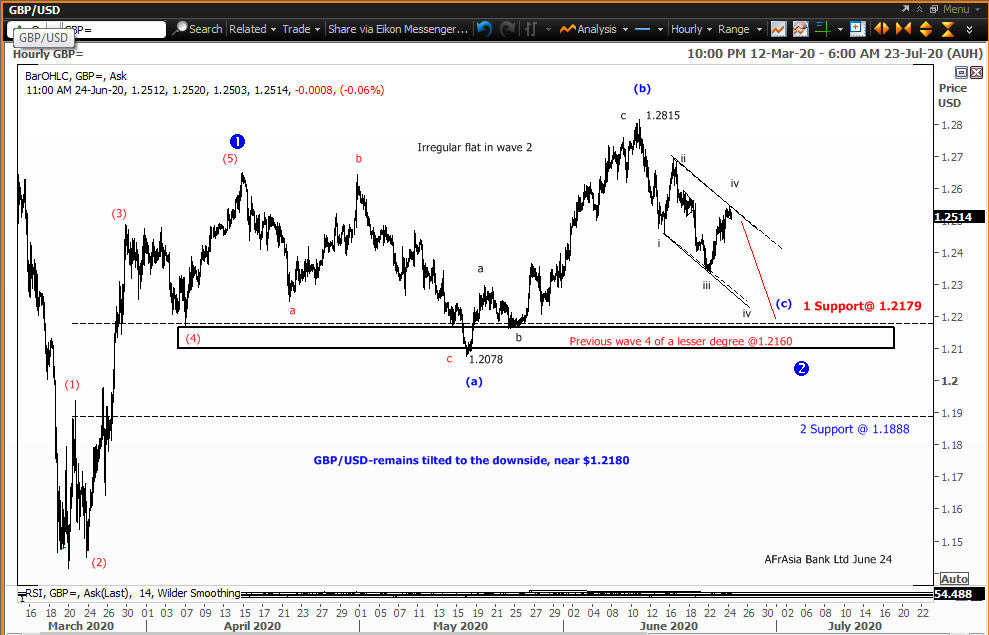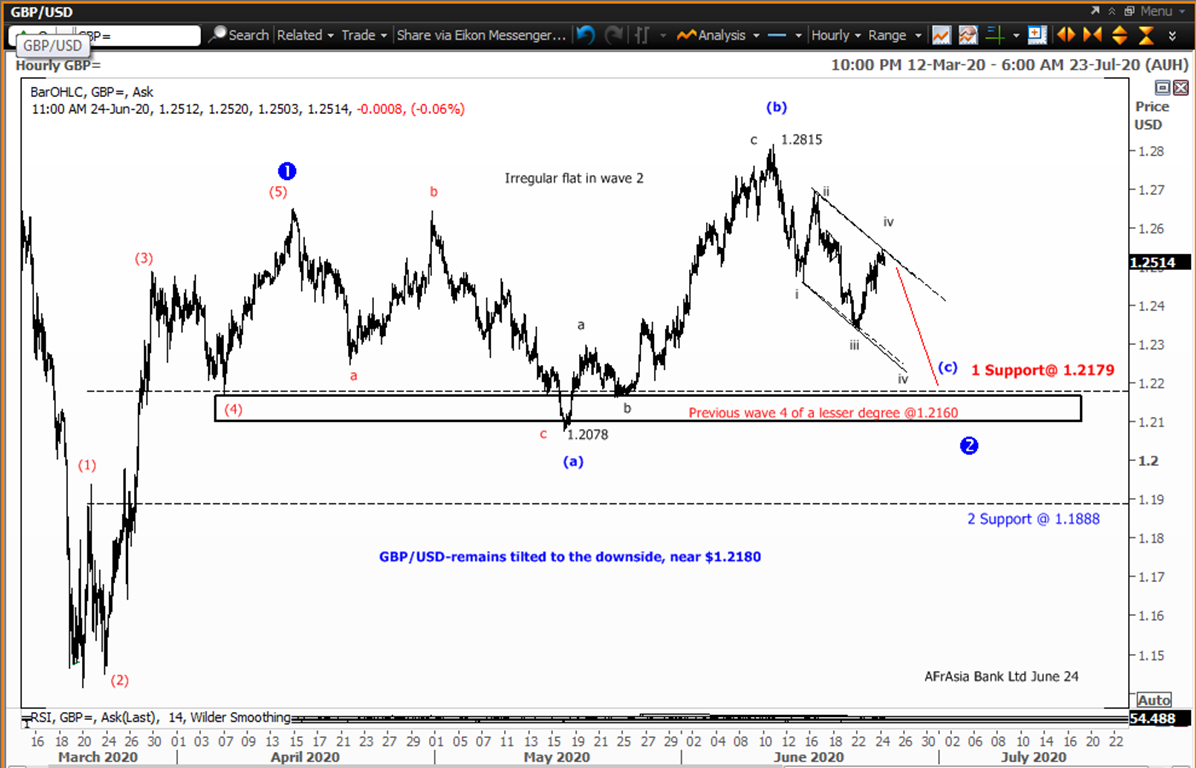The British Pound remains tilted to the downside near $1.2180 despite upbeat data

"Dancing is a wonderful training for girls, it's the first way you learn to guess what a man is going to do before he does it”- Christopher Morley
In the same vein, the Elliott Wave principle trains the analyst to discern what the market is likely to do before it does it.-A.J. Frost and Robert Prechter.
The News.
The British Pound soared above $1.2500 mark on Tuesday after the UK Preliminary PMIs for June came in better than expected figures both in the manufacturing and the harder-hit Services sector. The manufacturing PMI rose to 50.1 from 40.7, while the service PMI improved to 47.0 from May’s 29.0, suggesting the economic conditions are returning to growth after the three months of an unprecedented downturn induced by the worldwide coronavirus lock down.
However, the Pound was rejected at a high of $1.2545 on Wednesday and clawed back swiftly close to trade at $1.2515 amid doubts over the easing of the UK’s coronavirus lock down restrictions. Also weighing on the oldest existing currency, are worries on the next week’s Brexit talks and the UK-Japan trade concerns.
Indeed, Japan has given the United Kingdom just 6 weeks to strike a post-Brexit deal, putting Boris Johnson’s government under pressure to agree one of the fastest trade negotiation in history, The Financial Times reported.
The countries will build on an existing Japan-European Union deal, with Tokyo looking to scrap auto tariffs, while London has said it wants benefits for its financial services and textile industries.” A quick trade deal with Japan would advance the UK's accession to the Comprehensive and Progressive Trans-Pacific Partnership, a move which would improve market access for UK businesses across the Asia-Pacific region”, said International Trade Secretary Liz Truss.
However, the short timetable might leave the UK frustrated in some of its ambitions, highlighting the challenge Boris Johnson’s government will face in securing favourable deals before the Brexit transition period ended on 31 December.
Technical outlook –Pound tilted to the downside near $1.2180 despite upbeat UK PMI data
On the hourly chart, in an Elliott wave perspective, the upward correction that started on 18th of May 2020 to 11th June high of $1.2815 appeared to be a wave B within the April-June 2020 irregular flat decline (a)-(b)-(c) . A flat is a sideways, three-wave corrective pattern labelled A-B-C. Wave A (1.2078-18th May) and Wave B are always corrective waves (3-wave decline), while wave C is always a motive wave (5 wave structure). Actually, Wave C seems to be underway with one or two legs to the downside, completing wave 2, while a bearish contracting Diagonal pattern looming ahead.
Technically, we expect the bearish scenario on the GBP/USD to find its first strong support near $1.2170 printed on 7th April 2020 , as the Wave principle holds that the limit of any market correction tend to register their maximum retracement within the span of travel of previous fourth wave of lesser degree. However, a break below that level could open the door for further decline near $1.1888 (a 61.8% Fibonacci percentage of previous March-April 2020 impulsive rally).
On the other hand, a bullish move on the GBP/USD is expected to meet interim contention around $1.2694 and a breach of this area on a sustainable basis could open the door to a probable visit to the high of $1.2815 printed on 10th of June.

Disclaimer: This communication is provided for information and discussion purposes only. Unless otherwise indicated, it does not constitute an offer or recommendation to purchase or sell any financial instruments or other products. AfrAsia Bank does not guarantee or warrant the accuracy, reliability, completeness of the information in this publication.
- Tariff Guide - Non Resident (Applicable as from 15 March 2023)
- Tariff Guide - Resident (Applicable as from 15 March 2023)
- Bank of Mauritius Template on Fees, Charges and Commissions
- MBA Communiqué - Moody’s reviews Government of Mauritius rating
- Mauritius exits EU list of High-risk third countries on 13 March 2022
- MBA Communique - Mauritius exits UK High-Risk Third Countries list
- MBA Communiqué - Le "Skimming" - Clonage des Cartes Bancaires & ATMs
- MBA Code of Ethics and of Banking Practice

